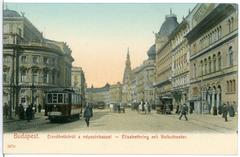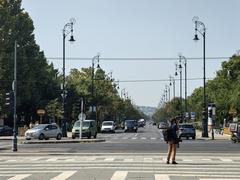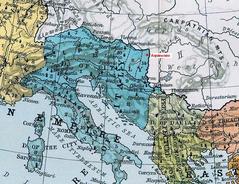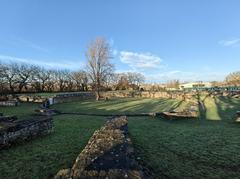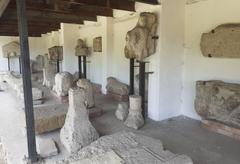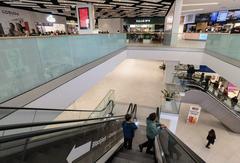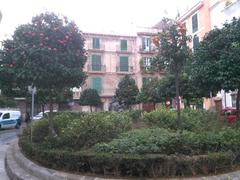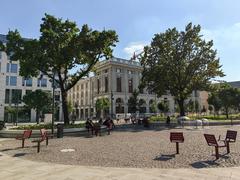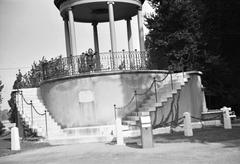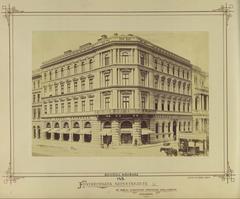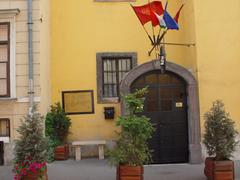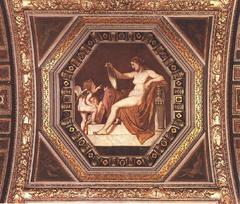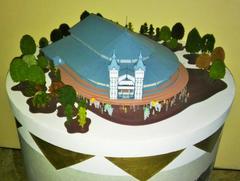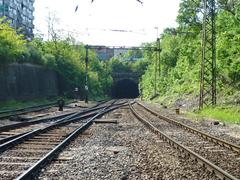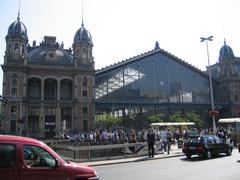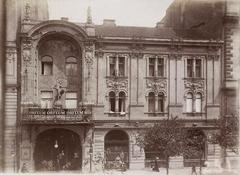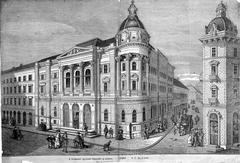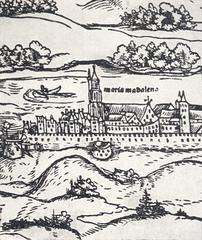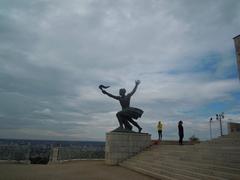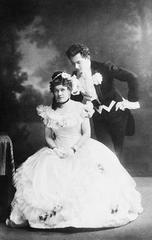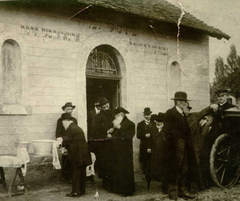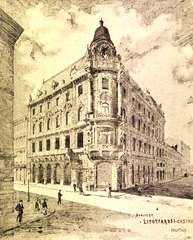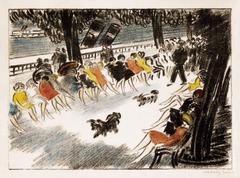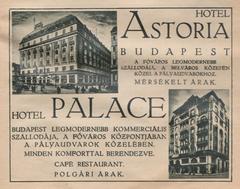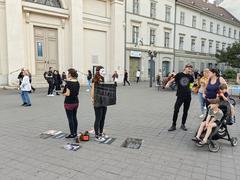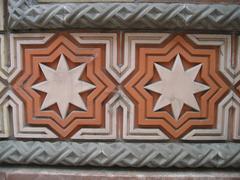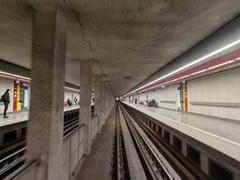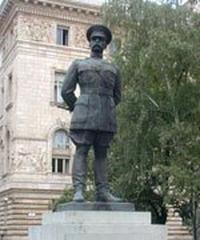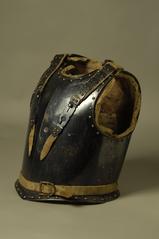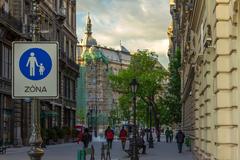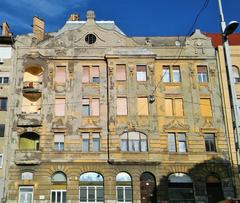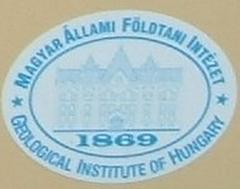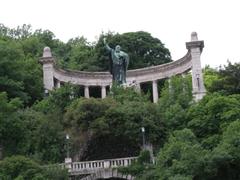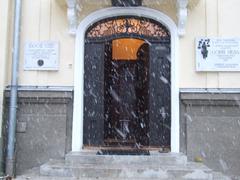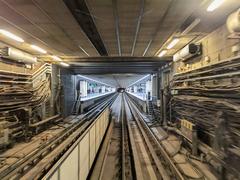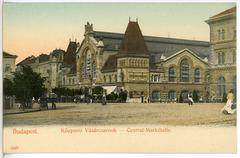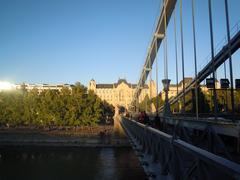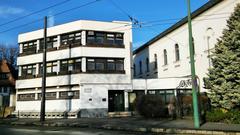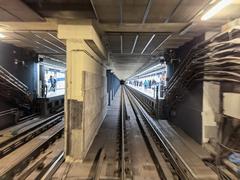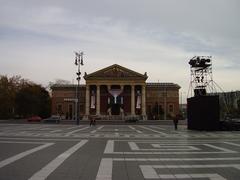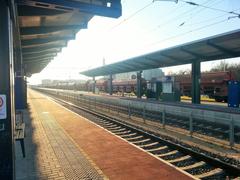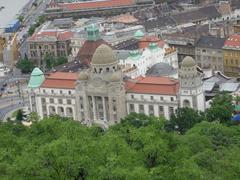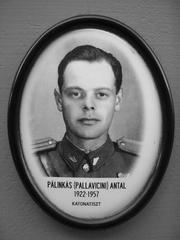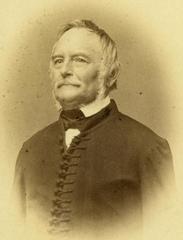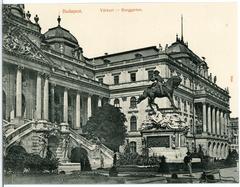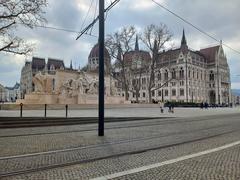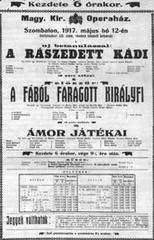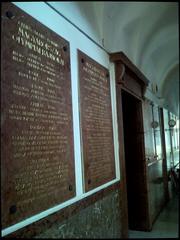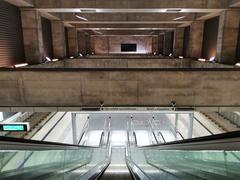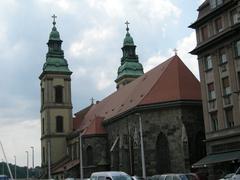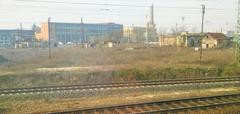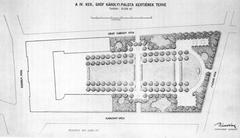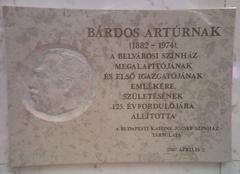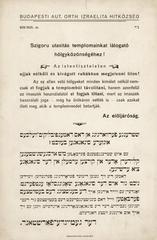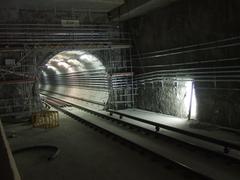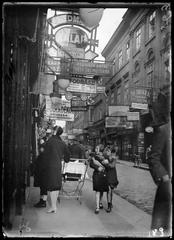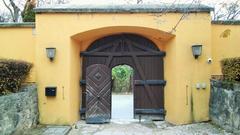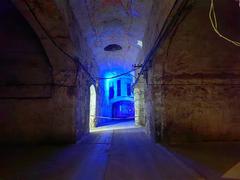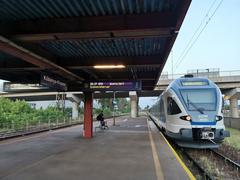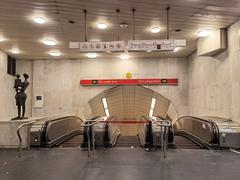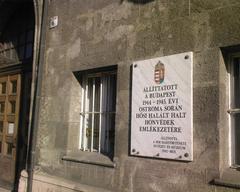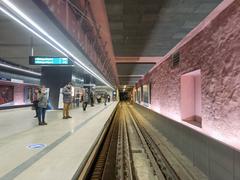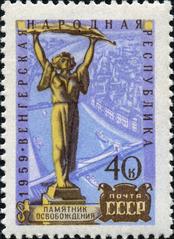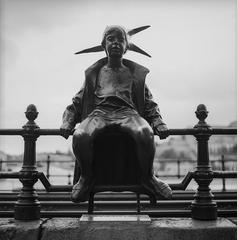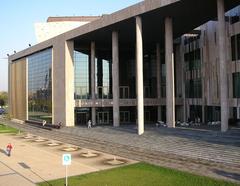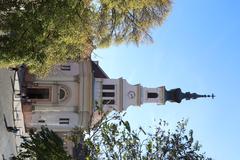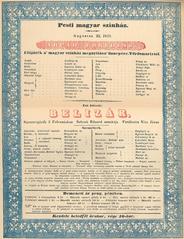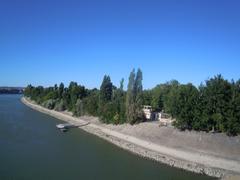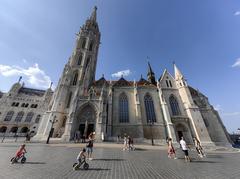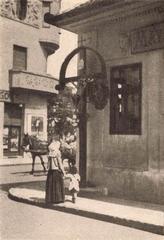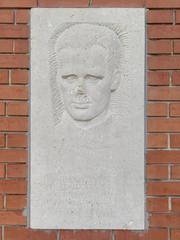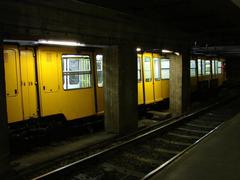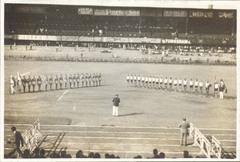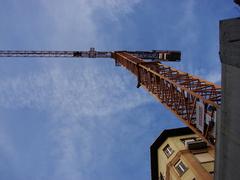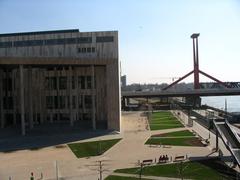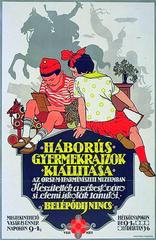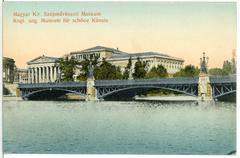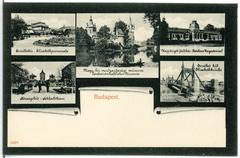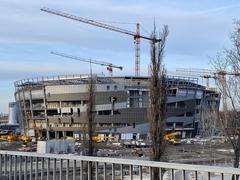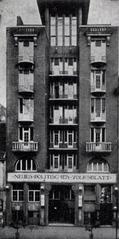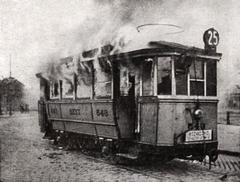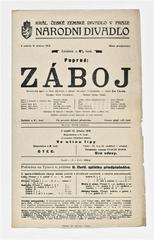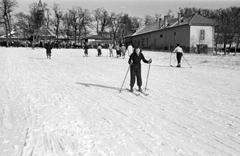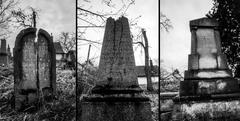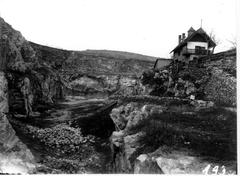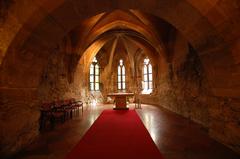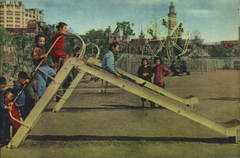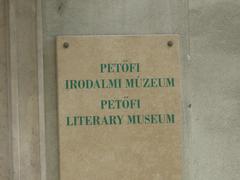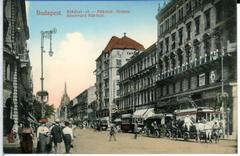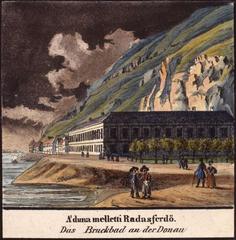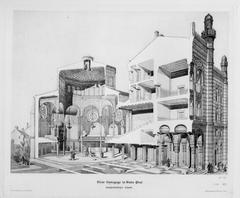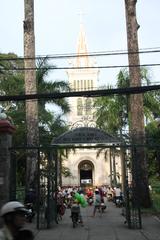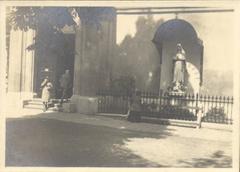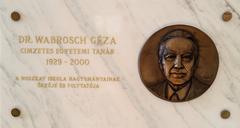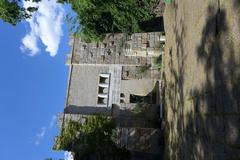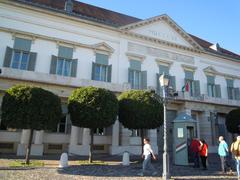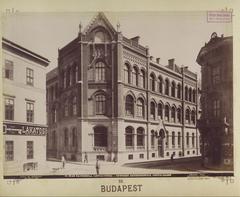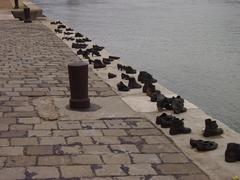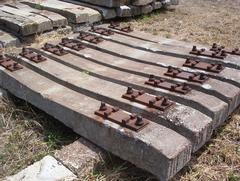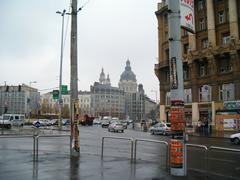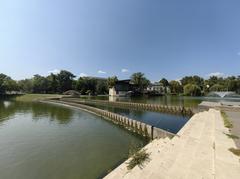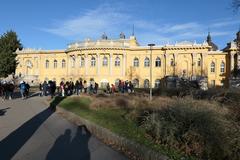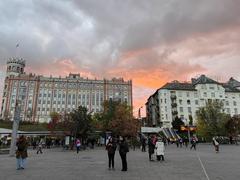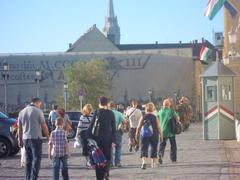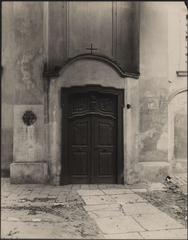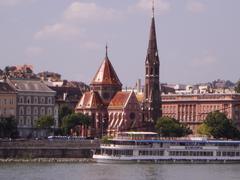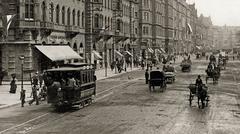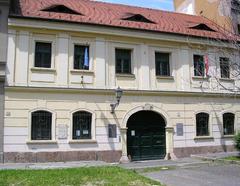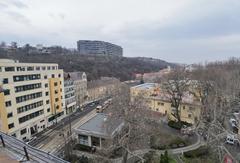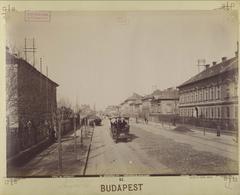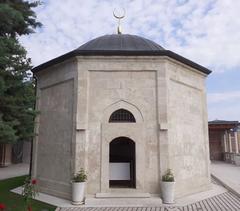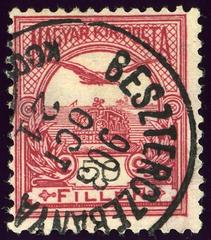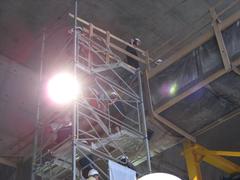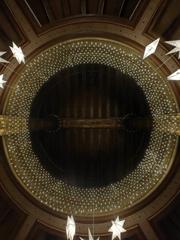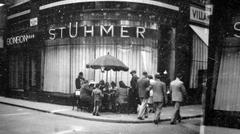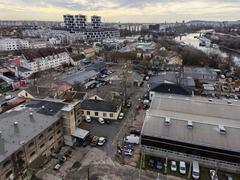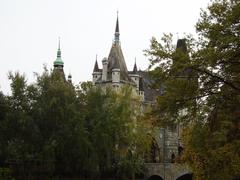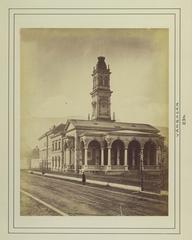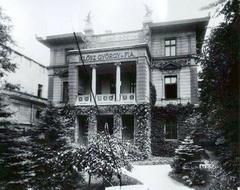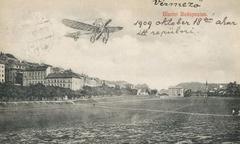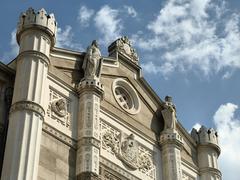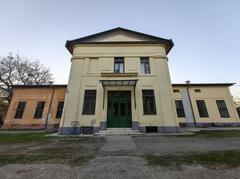Visiting Clark Ádám tér: Hours, Tickets, and Tips
Date: 23/07/2024
Introduction
Clark Ádám tér, located at the Buda end of the iconic Széchenyi Chain Bridge, serves as a historical and cultural cornerstone in Budapest, Hungary. Named after Adam Clark, the Scottish engineer who supervised the construction of the Chain Bridge, this square has witnessed various pivotal moments in Hungarian history. From its inception in the mid-19th century, Clark Ádám tér has evolved into a vibrant urban space, offering breathtaking views of the Danube River and the Pest side of the city. Visitors can explore nearby landmarks such as Buda Castle, Fisherman’s Bastion, and Matthias Church, making it an essential stop for those keen on delving into Budapest’s rich heritage (Budapest History, Hungarian National Museum).
Table of Contents
- Introduction
- Historical Background
- Architectural and Urban Development
- The Zero Kilometer Stone
- World War II and Post-War Reconstruction
- Modern Significance and Cultural Impact
- Visitor Information (Tickets, Opening Hours, Accessibility)
- Nearby Attractions
- Special Events and Guided Tours
- Photographic Spots
- FAQ Section
- Conclusion
Historical Background
Origins and Early Development
Clark Ádám tér is named after Adam Clark, a Scottish engineer who played a pivotal role in the construction of the Chain Bridge, the first permanent bridge across the Danube River in Budapest. Completed in 1849, the bridge was a monumental achievement in engineering and significantly contributed to the economic and social integration of Buda and Pest, which were separate cities at the time (Budapest History).
Adam Clark and the Chain Bridge
Adam Clark, born in Edinburgh, Scotland, in 1811, was invited to Hungary by Count István Széchenyi to oversee the construction of the Chain Bridge. Clark’s expertise and dedication were instrumental in the successful completion of the bridge, which became a symbol of progress and unity for Hungary. Despite numerous challenges, including political unrest and financial difficulties, Clark’s perseverance ensured its completion (Hungarian National Museum).
The Role of Clark Ádám tér in Hungarian History
Clark Ádám tér has witnessed numerous historical events in Hungary. During the Hungarian Revolution of 1848-1849, the Chain Bridge and the surrounding area were strategic locations. The bridge was partially destroyed by Austrian troops to prevent the Hungarian forces from advancing, but it was quickly repaired after the revolution, symbolizing resilience and recovery (Hungarian Revolution).
Architectural and Urban Development
The square has undergone several transformations over the years. Initially, it served as a simple terminus for the Chain Bridge. With the urban development of Budapest in the late 19th and early 20th centuries, Clark Ádám tér evolved into a more structured and significant urban space. The construction of the Buda Castle Tunnel, which begins at Clark Ádám tér and passes under Castle Hill, was another major project overseen by Adam Clark. Completed in 1857, the tunnel further enhanced connectivity between different parts of the city (Budapest Urban Development).
The Zero Kilometer Stone
One of the notable features of Clark Ádám tér is the Zero Kilometer Stone, a monument marking the starting point for all road distances in Hungary. Erected in 1932, the stone has become an iconic symbol of Budapest. The current stone, designed by Miklós Borsos, was installed in 1975 and is a popular spot for tourists and locals alike (Zero Kilometer Stone).
World War II and Post-War Reconstruction
Like much of Budapest, Clark Ádám tér suffered significant damage during World War II. The Chain Bridge was destroyed by retreating German forces in 1945, and the surrounding area was heavily bombed. The post-war reconstruction of Budapest was a massive undertaking, and the restoration of the Chain Bridge and Clark Ádám tér was a priority. The bridge was reopened in 1949, exactly 100 years after its original completion, and Clark Ádám tér was restored to its former glory (WWII Impact on Budapest).
Modern Significance and Cultural Impact
Today, Clark Ádám tér is a historical landmark and a vibrant cultural and social hub. The square is a starting point for many tourists exploring the Buda side of Budapest, including attractions such as the Buda Castle, the Fisherman’s Bastion, and the Matthias Church. The area around Clark Ádám tér is also known for its picturesque views of the Danube River and the Pest side of the city (Budapest Tourism).
Visitor Information (Tickets, Opening Hours, Accessibility)
- Visiting Hours: Clark Ádám tér is accessible 24/7.
- Tickets: No entry fee is required to visit the square, but guided tours of nearby attractions might have associated costs.
- Accessibility: The square is wheelchair accessible, and there are several information points for tourists.
Nearby Attractions
- Buda Castle: A historical castle and palace complex of the Hungarian kings.
- Fisherman’s Bastion: A terrace offering panoramic views of Budapest.
- Matthias Church: A Roman Catholic church with a rich history.
Special Events and Guided Tours
Clark Ádám tér often hosts cultural events and festivals. Guided tours are available and offer detailed insights into the history and significance of the area.
Photographic Spots
The square and its surroundings offer numerous photographic opportunities, especially with the Chain Bridge and Danube River as backdrops.
FAQ Section
- Is Clark Ádám tér free to visit? Yes, there is no entry fee to visit Clark Ádám tér.
- What are the best times to visit Clark Ádám tér? Early morning or late afternoon are ideal for avoiding crowds and capturing beautiful photographs.
- Are there guided tours available? Yes, several guided tours provide in-depth historical insights and cover nearby attractions.
Conclusion
Clark Ádám tér is a testament to Budapest’s rich history and cultural heritage. From its origins as a terminus for the Chain Bridge to its role in significant historical events and its modern-day significance, the square continues to be a focal point of Budapest’s urban landscape. To make the most of your visit, consider exploring nearby attractions, participating in guided tours, and enjoying the picturesque views of the Danube River. For more information and updates, follow us on social media and check out our mobile app Audiala (Budapest Tourism, Budapest Urban Development).
References
- Budapest History. (n.d.). https://www.budapest.com/city_guide/history.en.html
- Hungarian National Museum. (n.d.). https://hnm.hu/en
- Hungarian Revolution. (n.d.). https://www.britannica.com/event/Hungarian-Revolution
- Budapest Urban Development. (n.d.). https://www.budapest.com/city_guide/urban_development.en.html
- Zero Kilometer Stone. (n.d.). https://www.budapest.com/city_guide/attractions/zero_kilometer_stone.en.html
- WWII Impact on Budapest. (n.d.). https://www.britannica.com/place/Budapest/History
- Budapest Tourism. (n.d.). https://www.budapest.com/city_guide/tourism.en.html
